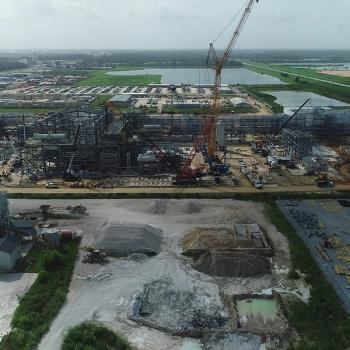
WILL SMALL BALL WORK FOR TURBOMACHINERY?
Small ball is a style of play in basketball whereby a team sacrifices traditionally crucial attributes such as height, strength and low post power in favor of the speed and agility of smaller players and better shooters. The finest example is the Golden State Warriors who used this strategy to great effect last year to become NBA champs. Could it be that such a change of emphasis might take place in the turbomachinery marketplace?
Our cover story (p.15) takes up the rise of distributed generation. What is emerging is a grid where renewables take precedence over traditional sources. This means base load operation is giving way to an environment where turbines are being started up once or twice per day for short periods. To remain profitable, some are seeking to provide ancillary services on the grid such as synchronous condensing. Others are investigating combined heat and power (CHP). As utilities see more businesses gravitating towards CHP, the smart ones are becoming involved, helping their customers find the best approach and evolving contractual terms favorable to both parties.
This is happening at the same time as we are witnessing the creation of massive natural gas-fired facilities using the latest H and G-class turbines. Bigger machines have always claimed the lion’s share of turbomachinery dollars. But that might not be the case for much longer, particularly in the U.S. and Europe. Our market trends report (p.30) lays out the possible consequences of ongoing renewable and energy storage subsidies — they could potentially eliminate 80% of the funds currently being invested annually in large gas turbines in the U.S.
Think about this: Our cover story from five years ago featured the state-of-the-art Irsching 4 combined cycle plant in Germany which had surpassed 60% efficiency (Turbomachinery International, July/Aug 2011). It offered 578 MW that could be ramp ed up within 30 minutes. Yet it has been shuttered for about a year. The owner can’t find anyone to buy the power due to policies favoring the acceptance of energy from renewable sources. Similar grid practices are evolving in North America, which could make larger combined cycle plants a risky proposition. If that ends up being the case, one approach might be to go “small ball.” Instead of pinning the future on the sales of a relatively low number of big machines, there may be a market sweet spot for smaller turbines within a distributed grid architecture. There could also be a lot of potential for small GTs and microturbines as part of the CHP landscape.
Currently, such projects are heavily customized. Perhaps modularization and a turnkey approach can bring costs down enough to make small gas turbine projects far more attractive The Liquefied Natural Gas (LNG) sector learned that its decades-old pattern of seeking bigger and better compression chains was no longer what the market wanted. So it scaled things back and found some success selling smaller turbomachinery trains. Perhaps the same holds true in the gas turbine marketplace. Of course, this could be completely off the mark. It’s just the impression gotten from recent visits to user groups. Some of you may agree, others may disagree. Let us know your view of the market and where it might be heading. We’ll publish the best letters in our next issue.
Newsletter
Power your knowledge with the latest in turbine technology, engineering advances, and energy solutions—subscribe to Turbomachinery International today.




